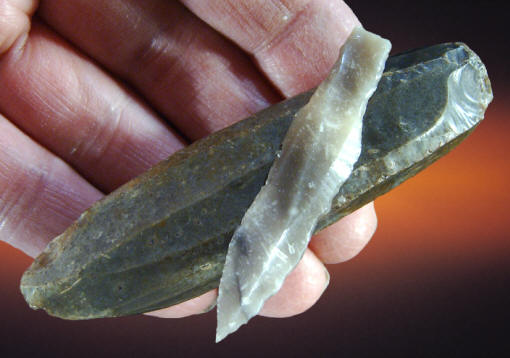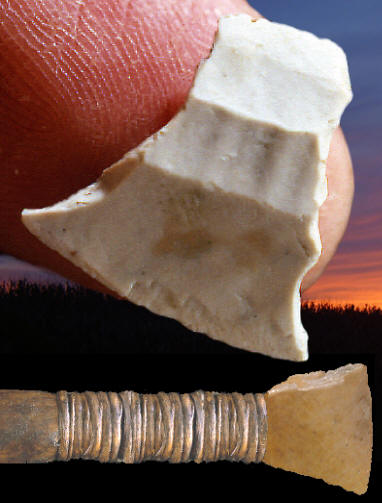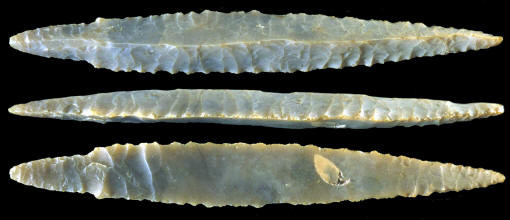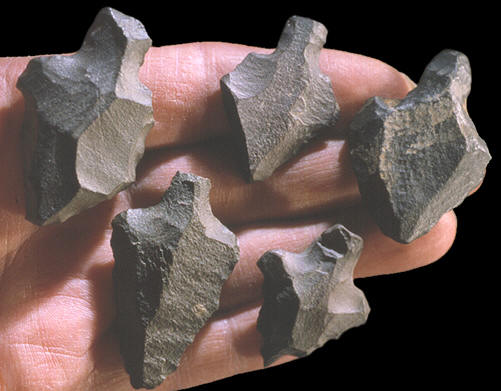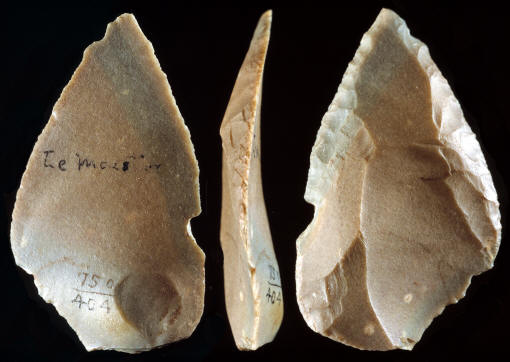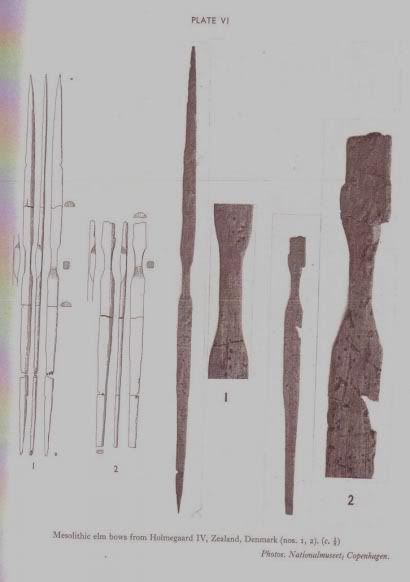Copyrighted by Peter A. Bostrom-
Arrow Point and Core from Denmark
Transverse arrowhead from the Mesolithic and Early Neolithic Period of North and Western Europe
Three-sided Projectile Point from Lolland, Denmark (before 2200 BCE)
Solutrean Shouldered Point from Fumel site, France (2200-1800 years ago)
Aterian points struck from Levallois cores from southern Morocco (40000-30000 years ago)
Mousterian Point from Le Moustier, France (120000-75000 years ago)
References:
Peter A. Bostrom.
June 30, 2011. "Projectile Points Made on Blades and Flakes: Africa,
United States, Mexico
Belize, France, Panama, Northern Europe 200,000 to
1,400 Years Ago." Lithics
Casting Lab.com
Levantine and Southwest Asia Middle and Upper Palaeolithic Point types
European Middle and Upper Palaeolithic Point types
Shea J. J. 2006. “The Origins of Lithic Projectile Point Technology: Evidence from Africa, the
Levant, and Europe.” Journal of Archaeological Science
33(6): 823-846.
Photograph taken from:
Solutrean Tools from France (22,000-17,000 years ago)
Photograph taken from:
